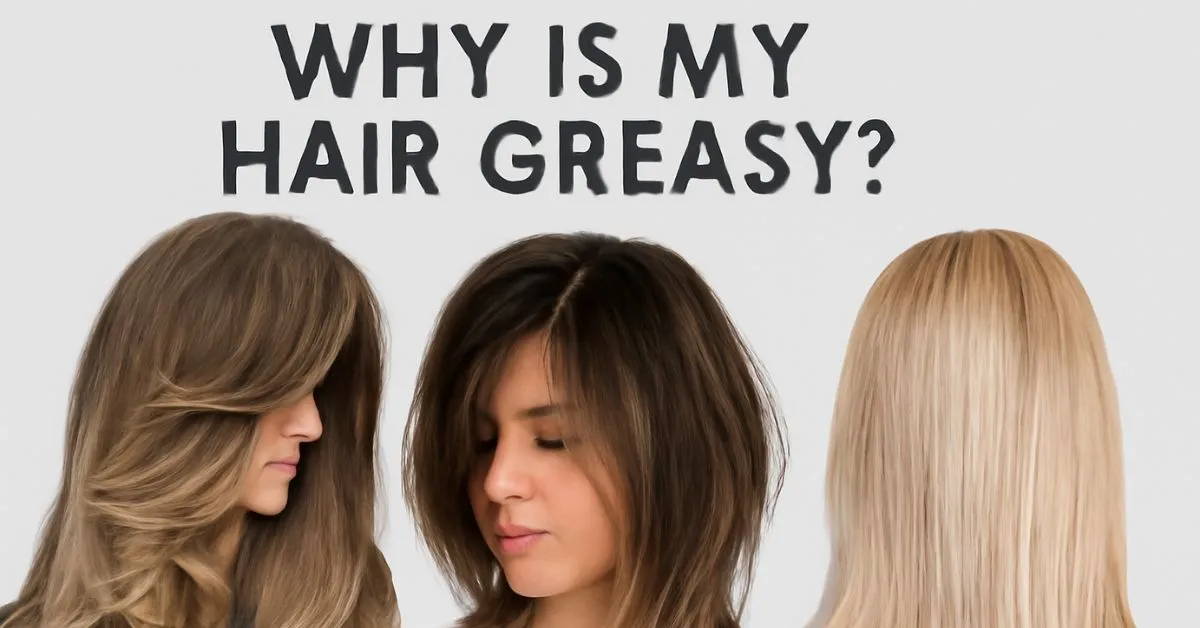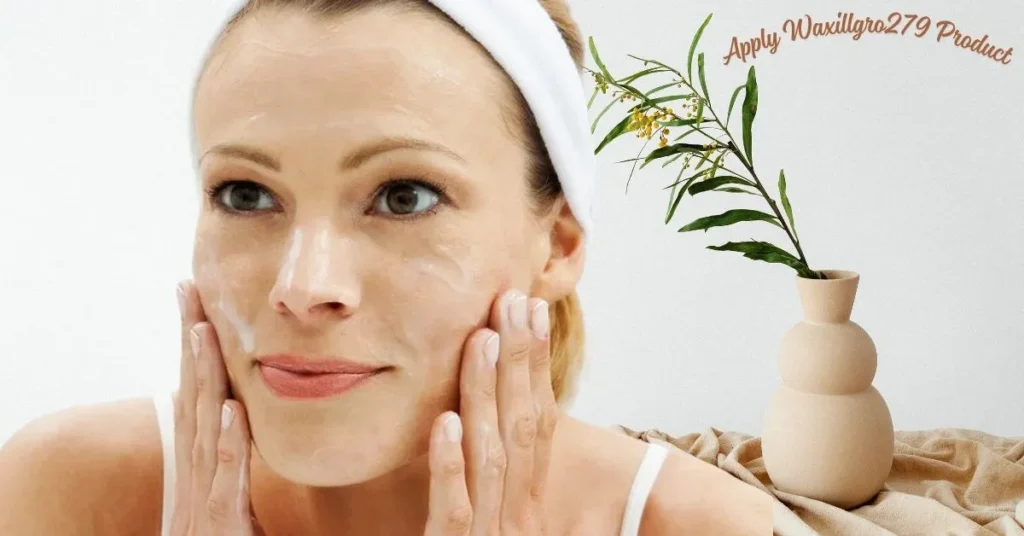Greasy hair can feel like a never-ending problem. You wash it in the morning, and by the afternoon, your roots look shiny again, like you dipped them in oil. If that sounds familiar, you’re not alone. A lot of people deal with oily hair, and they ask the same question: why is my hair greasy?
Here’s the good news: greasy hair doesn’t always mean something’s wrong. But it can be annoying, and it’s often a sign that something in your hair routine needs a quick fix.
This guide breaks it all down. You’ll learn why your hair gets greasy, what causes it, and the simple things you can do to get it under control.
What Makes Hair Greasy?
The main reason behind greasy hair is oil. Your scalp has tiny oil glands, called sebaceous glands, that produce sebum. Sebum is a natural oil that keeps your hair soft, shiny, and protected.
But here’s the trick. When the glands go into overdrive, your hair can look greasy instead of healthy. This buildup starts at the roots and travels down the strands. If there’s too much sebum or if the oil mixes with dirt, sweat, or product residue, your hair can turn limp, flat, and sticky-looking.
1. Your Scalp Type
Just like skin, the scalp can be dry, balanced, or oily. If you’ve got an oily scalp, your hair will get greasy faster than someone with a drier scalp. That’s because the sebaceous glands are more active and push out more sebum than needed.
Common signs of an oily scalp:
- Greasy roots a few hours after washing
- Itchy scalp or dandruff
- Hair clumps together
- Feels heavy at the crown
If this sounds familiar, you’re dealing with a naturally oily scalp. That’s the biggest reason people ask “why is my hair greasy.”
2. Overwashing With Shampoo
It might seem like washing hair every day will solve the problem. But doing it too much can make things worse. Shampoo removes oils, but when it strips too much, the scalp fights back by producing even more oil. That’s a rebound effect.
Key signs you’re overwashing:
- Hair feels greasy soon after washing
- Scalp feels tight, itchy, or flaky
- You’re using a harsh shampoo
It’s like telling your scalp, “We’re dry. Pump out more oil.” And it listens.
3. Wrong Shampoo or Conditioner
The shampoo aisle is crowded. But not every shampoo works for every scalp. Using a heavy moisturizing shampoo or a conditioner made for dry hair can weigh down your strands and lead to oily buildup.
Watch out for:
- Labels that say “moisturizing,” “hydrating,” or “for dry hair” if your scalp’s already oily
- Using thick conditioners on the roots
- Products that don’t rinse out cleanly
Look for clarifying shampoo, volumizing shampoo, or lightweight conditioners. These are better for greasy hair types.
4. Product Buildup
Hair creams, serums, leave-ins, heat protectants, sprays, and even dry shampoo can all leave behind residue. Over time, this product buildup traps oil, dirt, and sweat, and your hair starts to look dull and dirty even after washing.
Tip: Use a clarifying shampoo once a week to break down stubborn buildup.
Too much product also clogs your hair follicles, making it harder for your scalp to stay healthy.
5. Touching Hair Too Much
Every time fingers touch your scalp or hair, oil from the hands spreads. Combine that with scratching, brushing too often, or playing with your hair, and it’s a recipe for fast grease.
What to do:
- Keep your hands off your head
- Don’t brush your hair more than you need
- Use clean brushes and combs
Even your pillowcase can collect oil and transfer it back. So wash it often, especially if you go to bed with product in your hair.
6. Hormones
Hormones play a big role in sebum production. Teenagers, people with PCOS, those on certain medications, or during periods of high stress might notice oil levels jump.
Hormonal triggers include:
- Puberty
- Menstruation
- Pregnancy
- Birth control
- Stress and anxiety
High levels of androgens, like testosterone, push sebaceous glands to make more oil. It’s common and normal, but managing it may take more than just hair care. A dermatologist can help if it’s linked to hormone imbalances or skin issues like seborrheic dermatitis.
7. Weather and Environment
Humidity and heat boost sweat and oil production. Cold and dry air, on the other hand, can dry out the scalp, which again signals the glands to produce more oil.
Pollution can also cling to your hair, trapping oils and dirt. So greasy hair might just be reacting to your environment.
Solution:
- Adjust wash days based on weather
- Use a scalp scrub or clarifying shampoo weekly
- Protect hair from sun, wind, and pollution when possible
8. Genetics
Some people are just born with more active sebaceous glands. If oily hair runs in the family, chances are your scalp follows the same pattern.
It’s not a bad thing. Natural oils are part of a healthy hair system. But managing it is all about balance and care.
9. Hair Type Matters
Your hair type plays a big role. Straight and fine hair tends to look greasier because oil travels quickly from root to tip. Curly or wavy hair slows the oil’s movement down, so it stays drier for longer.
Oily hair shows up faster in:
- Fine hair
- Thin strands
- Straight styles
If your strands are fine and flat, the grease is more noticeable and builds up faster.
10. Water Temperature
Hot water feels relaxing, but it strips natural oils fast. Just like overwashing, this signals your scalp to replace the lost oil quickly.
Try: Washing with lukewarm or cool water. It’s gentler on your scalp and helps keep oil production steady.
11. Diet and Lifestyle
What goes in shows up on the scalp. A diet high in sugar, fried food, and dairy might trigger more oil production. Not drinking enough water, skipping sleep, or living under constant stress can also make your scalp misbehave.
Grease triggers:
- High-glycemic foods (sugary snacks)
- Dairy overload
- Poor hydration
- Stress
- Lack of sleep
Your scalp is skin. Treat it with care from the inside out.
12. Not Washing Often Enough
On the flip side, some people don’t wash their hair enough for their scalp type. If sebum, dirt, and product pile up, it shows as greasy, itchy, and heavy hair.
Signs you need to wash more:
- Scalp feels sticky
- Roots smell
- Hair feels flat and lifeless
Try washing every other day or every third day if you’ve got oily hair. Build a schedule that works with your scalp’s needs.
Simple Fixes for Greasy Hair
Use Dry Shampoo (But Wisely)
Dry shampoo is great for soaking up oil between washes. But don’t overdo it. Too much causes buildup and clogs follicles.
Spray at the roots, wait a minute, then brush it out.
Clarify Weekly
A clarifying shampoo strips buildup, dirt, and grease. Use it once a week or every 10 days. Don’t use daily, or it might dry out your scalp.
Condition the Right Way
Apply conditioner from mid-length to ends. Avoid the roots. Pick lightweight, silicone-free formulas.
Brush Clean and Smart
Clean your hairbrush weekly. Use wide-tooth combs for less oil spreading. Don’t brush hair too often.
Adjust Your Routine
Try washing hair every 2 to 3 days instead of daily. Use gentle products that fit your scalp type. Pay attention to how your hair responds.
When to See a Dermatologist
If your scalp feels sore, itchy, or flaky, and greasy hair won’t go away even with routine changes, a skin condition like seborrheic dermatitis or folliculitis might be the cause. A dermatologist can help with medicated shampoos or treatments that work below the surface.
Experts often point out that some people confuse natural oil with medical issues. If hair feels greasy and there’s redness, pain, or bumps, it’s time to get it checked.
Final Thoughts
Greasy hair doesn’t mean poor hygiene. It’s usually a mix of genetics, habits, and environment. The key is balance. You don’t need to strip your scalp or load it with products. You just need a routine that works for your scalp and hair type.
Start small. Swap your shampoo. Rinse with cool water. Skip heavy products at the roots. And see how your hair reacts.
Everyone’s scalp is different. But once you understand why your hair gets greasy, it’s easier to find what makes it look and feel fresh longer.



